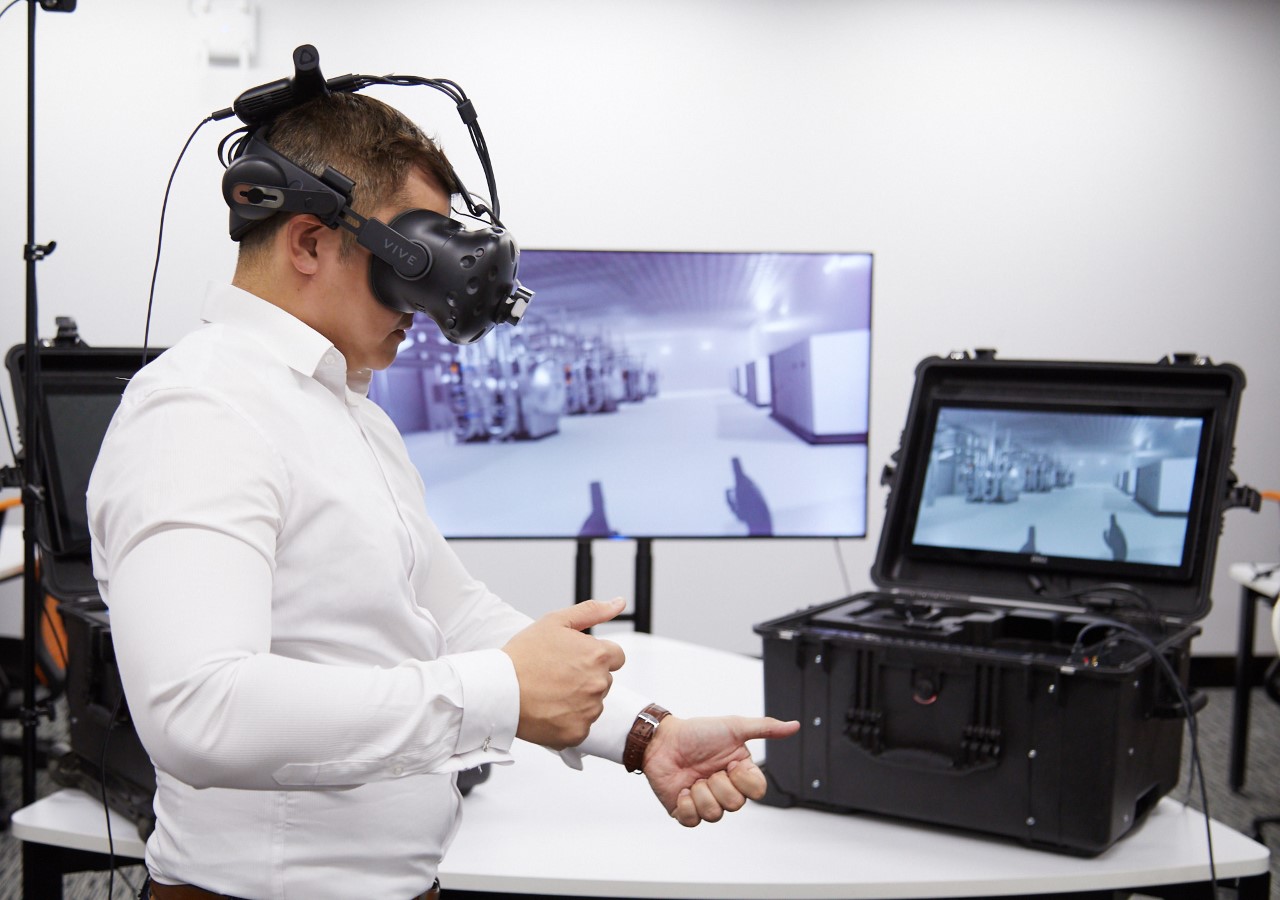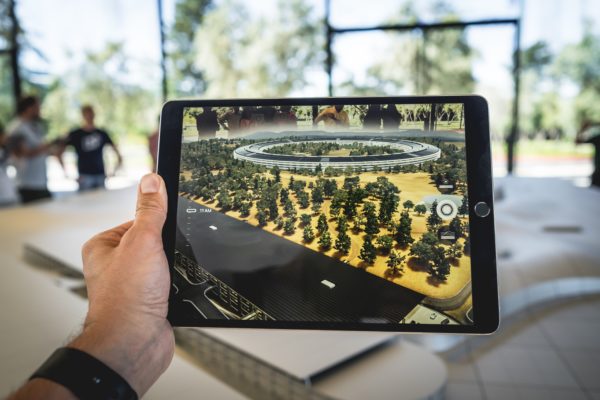When we think of virtual reality, we may find our thoughts turning to video games. But VR has many other interesting and valuable uses in our world today.
Virtual reality (VR) involves the creation of interactive, lifelike environments. From the realistic to the fantastical, they can be so detailed that users might find themselves fully immersed in these digital worlds.
Users often wear a head-mounted or smartphone-based display, which allows the virtual world to obscure the real one.
For further immersion, haptic technology allows them to experience sensations connected to the five senses that correspond to the virtual world.
Essentially, our brains process this virtual reality as if the experience was real.
Virtual reality in the workplace
We’re now seeing VR used for on-the-job training and educational exercises, helping to take the risk out of risky situations.
“Virtual reality provides us with access to environments and scenarios that wouldn’t otherwise be possible,” says Associate Professor Ben Horan from Deakin University’s School of Engineering.
So, with VR we can train to respond to emergencies or challenges unique to a particular kind of location that we may not usually have access to, such as a remote location.
For example, surgeons can safely practise a precise procedure in a simulated, authentically replicated surgical environment without any of the potentially catastrophic risks that could occur in a real operating room.
“Most workplace safety training is still delivered traditionally in a classroom focusing on theory.”
A/Prof Horan says we may not have the time or money to expose trainees to certain scenarios or training programs like safely shutting down a complex machine.
Even with time and money, these scenarios can only be replicated to a certain extent in real life.
VR is time- and cost-effective and can replicate these scenarios.
Mechanics are learning to repair planes, retail workers are experiencing how to deal with armed robberies, and young soldiers are experiencing real-life situations in a safe and controlled environment.
A great way to ‘learn by doing’, gaining feedback and being able to try again without the actual associated dangers or risks.
Melbourne Water and VR
A/Prof Horan is Director of Deakin’s Virtual Reality Lab, a unique, cutting-edge VR facility whose expertise is internationally recognised.
A/Prof Horan and his team work on a range of projects with different partners. One of their current projects involves Melbourne Water – who manage and protect Melbourne’s major water resources – and the multi-user Virtual Reality Training System.
The system is used to train employees to safely operate complex equipment such as ozone generators.
Ozone generators are used as part of sewerage processing and rely on dangerous chemicals like ozone in order to treat the water.
“We can train employees in the safe isolation and shut down of large plants and machinery without needing to actually access and shut down the real operating machine,” A/Prof Horan says.

Using the training system, users can explore the facilities as if they were in them – hazards can be noticed and evaluated more effectively and much more quickly, such as a valve being placed at an inaccessible height.
Experiencing this environment in VR allows workers to learn and make mistakes without the serious consequences.
Melbourne Water and Deakin’s VR Lab have also partnered for another interesting VR research project: a snakebite prevention and first aid training program for field workers who often have close calls with snakes.
The trainee practises identifying snake locations in the simulator, preventing a bite, and first aid treatment for themselves or a colleague if bitten.
Firefighting with VR
Training firefighters can be difficult given the lack of training facilities and costly resources, not to mention the danger posed to new trainees and the potential environmental damage.
Deakin University launched FLAIM Systems in 2017 and created the ground-breaking FLAIM Trainer to address these barriers.
Now used in 16 countries, the FLAIM Trainer is an immersive VR simulator with a haptics feedback system made up of a breathing apparatus and heated personal protective clothing that replicates the temperatures of being close to a fire.
The trainee can enter a range of highly realistic training scenarios, see the realistic renders of smoke and foam effects, feel the heat from the virtual fire, the force feedback of the hose reel system, and the weight of the breathing apparatus.
Instructors can see the trainees’ heart and respiration rates, their physiological responses and performance, and how much air they’re using.
This modern VR technology allows firefighters to train for various fire events and conditions that are unsafe in ‘reality’ and difficult to reproduce and control in the real world – such as a car fire, house fire or wildfire – in a safe and practical way.
“We can have multiple trainees and a trainer all share the same virtual training space from anywhere in the world.”
This brings a new level of interactivity, flexibility and the opportunity to cooperate as a team.
Firefighters can now train anywhere, even within their own fire station, and at any time, even in the middle of winter.
Given the devastation of Australia’s bushfires, perhaps the best perk of this technology is its protection of the environment.
The VR releases no smoke or pollutants into the atmosphere, creates no waste, discharges no unnecessary foam contamination, and uses no water.
Harnessing this technology means no lighting fires or simulating road crashes and other serious incidents, reducing costs in time, training, danger, resources and risks to the firefighters’ and community’s health.
Trainees can make decisions, make mistakes and gain the experience and confidence they need before live fire training.
This VR allows our firefighters to be safely and thoroughly prepared for the unique, crucial and dangerous work they’ll face on the job.
VR is proving itself to be a cheaper, more effective and sustainable way to move forward.



